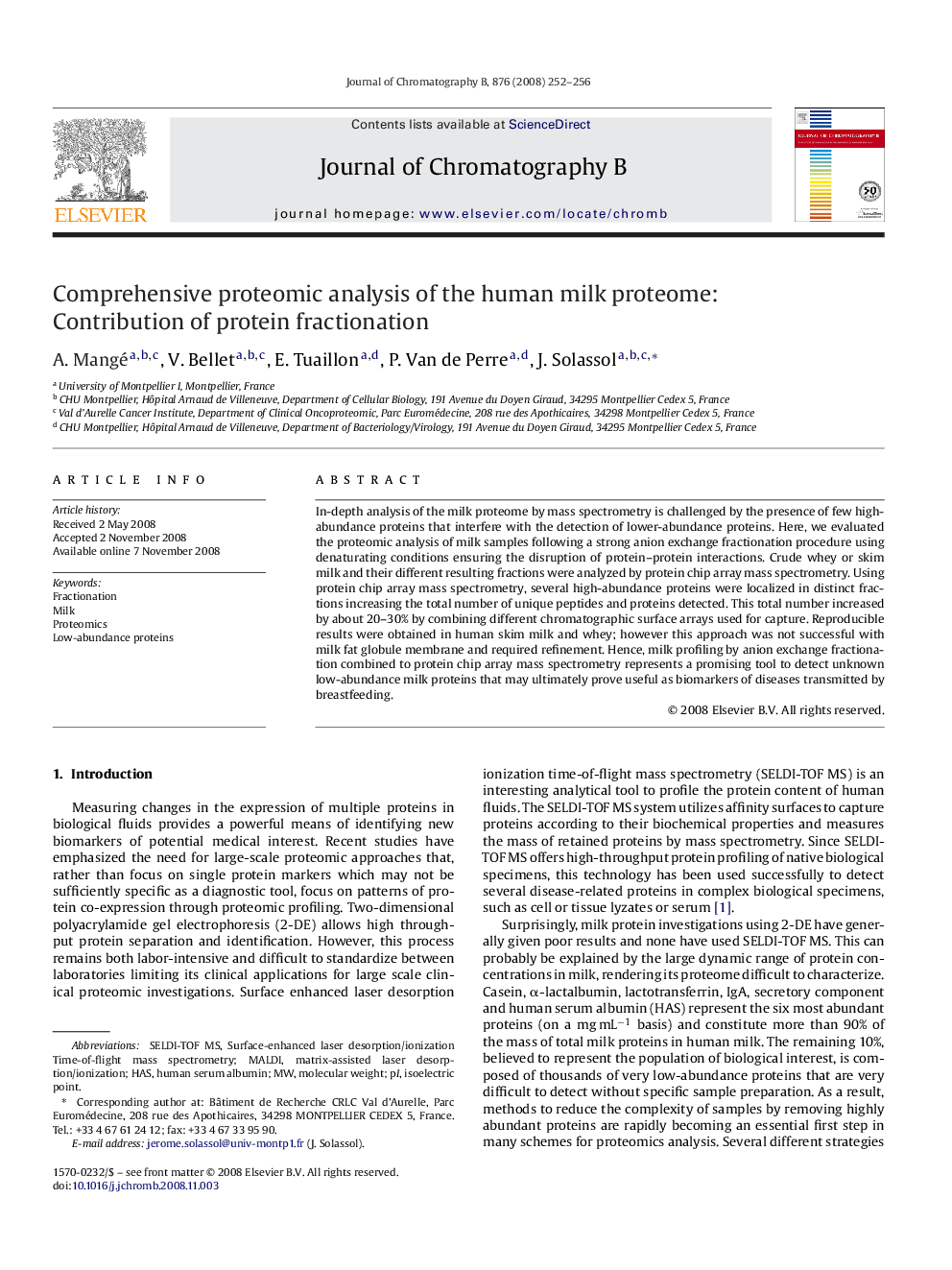| Article ID | Journal | Published Year | Pages | File Type |
|---|---|---|---|---|
| 1216500 | Journal of Chromatography B | 2008 | 5 Pages |
In-depth analysis of the milk proteome by mass spectrometry is challenged by the presence of few high-abundance proteins that interfere with the detection of lower-abundance proteins. Here, we evaluated the proteomic analysis of milk samples following a strong anion exchange fractionation procedure using denaturating conditions ensuring the disruption of protein–protein interactions. Crude whey or skim milk and their different resulting fractions were analyzed by protein chip array mass spectrometry. Using protein chip array mass spectrometry, several high-abundance proteins were localized in distinct fractions increasing the total number of unique peptides and proteins detected. This total number increased by about 20–30% by combining different chromatographic surface arrays used for capture. Reproducible results were obtained in human skim milk and whey; however this approach was not successful with milk fat globule membrane and required refinement. Hence, milk profiling by anion exchange fractionation combined to protein chip array mass spectrometry represents a promising tool to detect unknown low-abundance milk proteins that may ultimately prove useful as biomarkers of diseases transmitted by breastfeeding.
